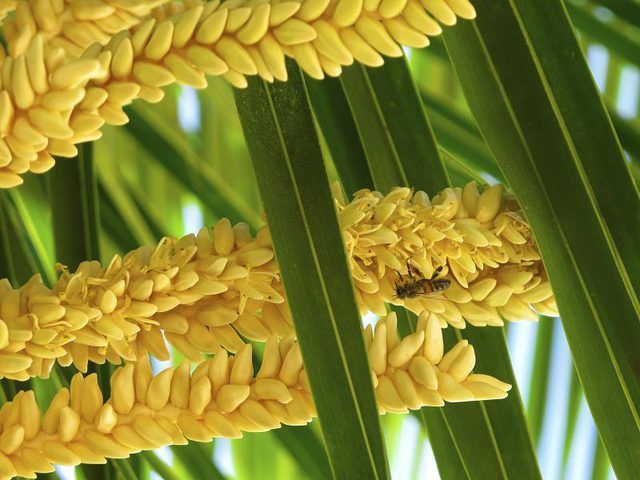Bulbs
Flower Basics
Flower Beds & Specialty Gardens
Flower Garden
Garden Furniture
Garden Gnomes
Garden Seeds
Garden Sheds
Garden Statues
Garden Tools & Supplies
Gardening Basics
Green & Organic
Groundcovers & Vines
Growing Annuals
Growing Basil
Growing Beans
Growing Berries
Growing Blueberries
Growing Cactus
Growing Corn
Growing Cotton
Growing Edibles
Growing Flowers
Growing Garlic
Growing Grapes
Growing Grass
Growing Herbs
Growing Jasmine
Growing Mint
Growing Mushrooms
Orchids
Growing Peanuts
Growing Perennials
Growing Plants
Growing Rosemary
Growing Roses
Growing Strawberries
Growing Sunflowers
Growing Thyme
Growing Tomatoes
Growing Tulips
Growing Vegetables
Herb Basics
Herb Garden
Indoor Growing
Landscaping Basics
Landscaping Patios
Landscaping Plants
Landscaping Shrubs
Landscaping Trees
Landscaping Walks & Pathways
Lawn Basics
Lawn Maintenance
Lawn Mowers
Lawn Ornaments
Lawn Planting
Lawn Tools
Outdoor Growing
Overall Landscape Planning
Pests, Weeds & Problems
Plant Basics
Rock Garden
Rose Garden
Shrubs
Soil
Specialty Gardens
Trees
Vegetable Garden
Yard Maintenance
How Do Palm Trees Reproduce?
How Do Palm Trees Reproduce?. Palm trees are a diverse, complex group of plants, with about 2,500 species of mostly tropical origin. All of them reproduce from seed. For palms with single trunks, it's the only way they reproduce. For palms that cluster or branch, an offset or branch can root to make a new plant. For seed formation, pollen from male...

Palm trees are a diverse, complex group of plants, with about 2,500 species of mostly tropical origin. All of them reproduce from seed. For palms with single trunks, it's the only way they reproduce. For palms that cluster or branch, an offset or branch can root to make a new plant. For seed formation, pollen from male flowers transfers to female flowers, which develop a fruit with a seed inside. This is sexual reproduction, and keeps the species genetically flexible. Rooting offsets, or vegetative reproduction, makes duplicates of the mother plant.
Flowers and Pollination
It takes palms anywhere from three to 40 years, depending on the species, to flower for the first time. Palm trees have separate male and female flowers. Sometimes they're on the same plant, and sometimes, as in the date palm (Phoenix dactylifera), the male and female flowers are on separate trees. Date palm grows in U.S. Department of Agriculture plant hardiness zones 9 through 11. They're wind-pollinated, but to ensure good fruit set, bring a stalk of male flowers to a flowering female tree and dust pollen onto female flowers with a cotton pad. Other palms are pollinated by wasps, flies, bees and beetles.
Seed Formation
Once pollen lands on the female flower, it fertilizes the female flower's ovary and seed development begins within the ovary walls. The ovary wall produces a fruit that surrounds the seed and is important in eventually carrying the seed away from the mother plant. Mature seeds vary in shape and size, many being hard and oval or round. You usually don't get to observe palm seed formation with the species grown as indoor container palms, because even if they reach flowering size, opportunities for cross-pollination are rare. If you live where palms can grow to maturity outdoors, you'll frequently see palms set seeds.
Seed Dispersal
In order to reproduce each kind of palm, the seeds need to find suitable germination spots where they won't compete with the parent. Many palm species have fleshy ovary walls around the seeds that are tasty to wildlife or to humans. An example is Canary Island date palm (Phoenix canariensis), which grows in USDA zones 9 through 11. Orange, 1/2- to 1-inch-long fruits attract birds and other wildlife. The fleshy exterior gets digested, and the seed passes through the digestive tract unharmed, often far away from the parent. Coconuts (Cocos nucifera) are the ultimate example of long-range dispersal. The whole fruit floats on ocean currents, often for thousands of miles, to find a beach to grow on. Coconut is hardy in USDA zones 10b through 11.
Vegetative Reproduction
Some palms produce new shoots from near the base of the trunk that can root to become new plants. In the case of date palms, where many named cultivars exist that are valued for the quality of their fruit, this is the only way to faithfully reproduce each variety. Some palms widely grown as house plants, such as Lady palm (Rhapis excelsa) and Bamboo palm (Chamaedorea microspadix) produce harvestable offsets. Lady palm grows in USDA zones 8 through 11 and bamboo palm in USDA zones 8 through 11.